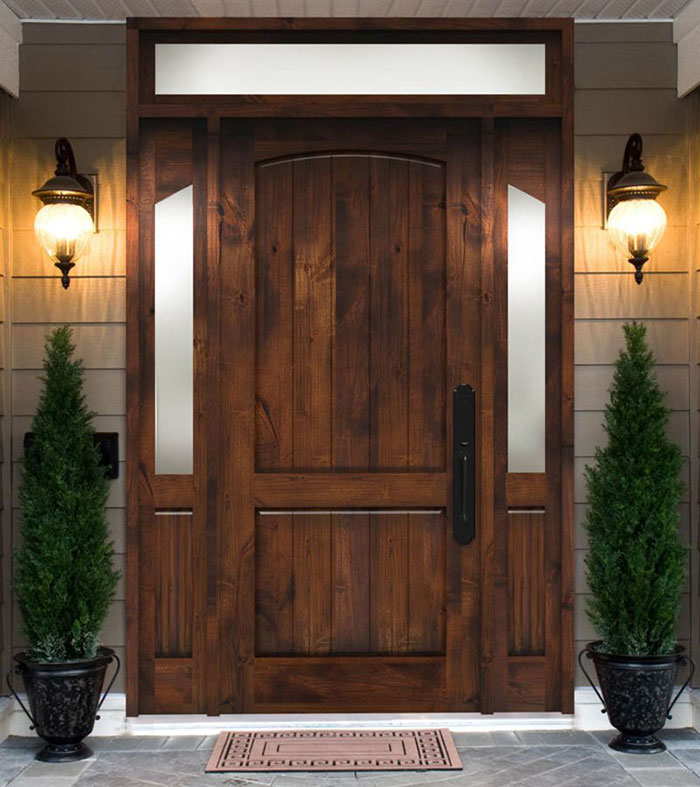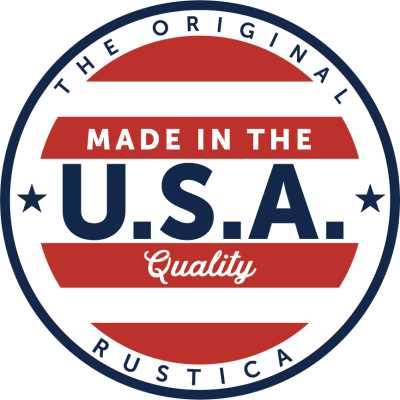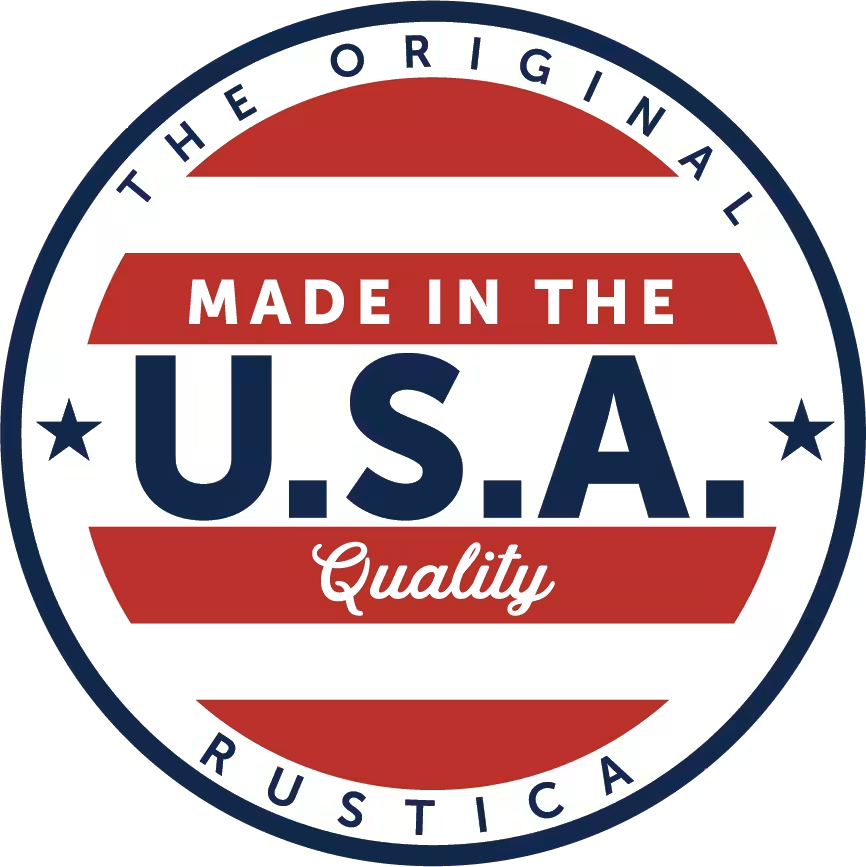
One of the most important aspects of
purchasing a new window or door with glass is choosing the right type of glass for your home or business. Knowing
which
type of
door or window glass to choose depends on your unique needs and desires for your windows or doors. There are
several different types of glass to choose from with their own key advantages. This includes:
12 Types of Glass for Windows and Doors
- Annealed Glass
- Float Glass
- Gas Filled Glass
- Heat Strengthened Glass
- Insulated Glass
- Laminated Glass
- Low E Glass
- Mirrored Glass
- Tempered Glass
- Tinted Glass
- Textured Glass
- Wired Glass
When beginning the window or door buying process, it’s normal to be unaware of all the different types of glass
available to you. It isn’t as easy as just choosing whatever the standard glass type is, however, as the type of
glass you choose will affect the quality, longevity, energy efficiency, security, privacy, and safety of your glass.
Considering these essential factors, it’s worth taking the time to research and
understand the different types of glass for doors and windows. That way, you can make an informed decision to pick
the glass that best serves your home or business.
12 Types of Glass for Windows and Doors
1. Annealed Glass
Annealed glass is a
type of standard glass that has not been heat-treated or coated. Annealed glass is a type of float glass that goes
through a slow cooling process to increase its strength and durability.
While it is
somewhat stronger than float glass, it is not nearly as strong as tempered, heat-strengthened, or laminated glass.
Moreover, when broken, it shatters into multiple sharp-edged shards.
Annealed glass
is a very basic type of glass for windows or doors. This makes it less expensive, but also means it has a greater
risk of breaking and or causing injury. That said, the benefit of annealed glass is that it can be cut and
re-shaped, if needed. It can also be used as a double
window glaze—in other
words, as a double pane window to increase its energy efficiency.
Annealed glass can
be further treated to enhance its strength and or energy efficiency. However, once treated, the glass is no longer
annealed glass and is now classified as whatever it was treated to become, such as low e glass or tempered glass.
2. Float Glass
This is glass in its most basic form, and does not go through any particular heating or
cooling process. Float glass can also be referred to as annealed glass. Though similar, they go through a slightly
different cooling process in which annealed glass is cooled more slowly.
Float glass
is used to make a large glass pane, which can be further treated or cut depending on its intended use. It’s made by
pouring molten glass into a molten tin, which gives it shape and smooths the glass surface, making it clear and
ready for use.
Typically, tempered or heat strengthened glass is made from either
float or annealed glass, and is cut to shape before the heating and cooling process.
Because float glass is the most basic glass type, it’s also the most fragile and least expensive. It isn’t
commonly used for home glass windows or doors because of its fragility. Moreover, when broken, it shatters into
sharp shards, which can be dangerous. Because of this, float glass isn’t allowed to be used in a
commercial door or
window setting.
3. Gas Filled Glass
Gas filled glass is a type of insulated glass, and refers to a double or triple pane
window filled with gas. This type of glass is also called “gas fills.”
The type of
gas used in the window or door glass is typically krypton, argon, or a mixture of both. However, the type of gas
used depends on the manufacturer. During the manufacturing process, the gas is inserted between the glass panes via
a small hole along the window spacer.
The purpose of gas filled glass is to enhance
insulation performance. Argon and Krypton gas don’t conduct heat well when compared to air. Because of this, they
are effective insulators and prevent frost buildup on the glass during cold weather.
Argon gas is more commonly used than krypton gas, and is considered the industry standard for double pane
windows and door glass. Argon is less expensive than krypton and is more reliable and readily available. Moreover,
argon is naturally occurring, non-toxic, odorless, and non-reactive. If a window or door glass breaks that is
gas-filled, the argon gas leak will dissipate quickly and not cause damage to the environment or building occupants.
Krypton gas is more expensive than argon because it’s denser and a better
insulator. That said, krypton is less readily available, so it’s harder to come by. It is also a non-toxic,
odorless, and naturally occurring gas, though it can also be man-made. Because of its density, it is more effective
in smaller spaces, so it’s commonly used in triple-pane glass structures.
Choosing
insulating glass, such as gas filled glass, helps stabilize your home’s temperature, which increases your home’s
energy efficiency. This helps you save on energy bills each month and increases the longevity of your window and
door glass.
4. Heat Strengthened Glass
Heat strengthened glass is a strong and durable glass that is two-times stronger
than regular annealed glass. As the name implies, it goes through a heating and cooling process that changes its
structure, making it harder to break and more resistant to wind load and thermal stress than annealed glass.
Heat strengthened glass is made from annealed glass that is heated to a temperature
of about 1,200 degrees Fahrenheit. It is then exposed to cool air, creating surface and/or edge compression in the
glass. Tempered glass goes through a similar process, but the cooling is much more rapid, creating increased
internal tension as the outer surface compresses.
This glass type is not as strong
as tempered glass, and isn’t considered
safety glass. This is
because heat strengthened glass still produces large shards of glass when broken.
That said, heat strengthened glass is the industry standard whenever a strong glass is needed, but safety glass
isn’t required. Because of this, home windows and
doors with windows
will often have heat strengthened glass as a higher-quality, more durable glass option, especially when compared to
annealed or float glass.
5. Insulated Glass
Insulated glass is
another way to describe Low-E glass, gas-filled glass, and or heat-retention glass. However, insulated glass units
(IGU) specifically refer to windows or door glass with two or more glass panes, such as a double pane or a triple
pane window, with an air space between the window panes.
Insulated glass is often
gas filled glass, but not always. Some insulated glass units contain only air space, rather than a gas insert. The
ones that do contain gas go through the same process as discussed in the gas filled glass section.
The purpose of insulating glass is to diffuse heat transfer, whether that’s heat
coming from the sun or the heat from your home. Insulated glass stabilizes your home’s temperature by preventing
heat loss from internal temperatures. On the other hand, it prevents heat from coming in, which keeps the internal
temperatures cool and comfortable in the summer.
Insulated glass is designed to
increase your home or business’s energy efficiency, and is the industry standard for all residential or
commercial
storefront windows. You can augment your window’s insulating performance by choosing gas-filled glass, a
triple pane window, or by adding a special coating, such as Low-E or window tint.
6. Laminated Glass
Another type of safety glass or glazing is
laminated glass.
Laminated glass doesn’t go through a heat process like tempered or heat strengthened glass. Rather, it’s made of two
or more panes of annealed glass joined together by a layer of polyvinyl butyral (PVB), a type of plastic. Laminated
glass could have several layers of glass and PVB or just one layer of PVB between glass panels. The more layers of
PVB there are, the safer and stronger the glass.
The biggest advantage of laminated
glass is that it doesn’t shatter to the ground when broken. Rather, the broken glass sticks to the plastic. While
laminated glass isn’t considered shatterproof glass, it comes close with its shatter-resistant makeup. The PVB also
makes laminated glass much harder to break than regular annealed glass.
Other
benefits of laminated glass include soundproofing and UV radiation reduction. The plastic portion may be clear or
tinted, depending on your personal preference.
Laminated glass is ideal for commercial structures, as
it protects the building from break-ins and hazardous sharp, broken glass. It is also beneficial for areas that
experience extreme weather, such as large hail, tornadoes, or hurricanes. It obviously isn’t strong enough to hold
up against direct pressure from such elements, but it will be much safer to clean up.
This type of safety glass is often used for skylights, automobile windshields, glass doors, glass railings,
and glass floors.
Laminated glass is more expensive than tempered glass, but it is
the preferred choice if you want the best safety glass there is. For home windows, heat strengthened or tempered
glass is more affordable and common, as broken windows aren’t as much of a concern in a residential setting.
7. Low E Glass
Low E glass, short for low emissivity glass, is a type of glazing created to enhance a
window’s insulating performance. A special coating is applied to the glass to minimize the amount of infrared and
ultraviolet light that comes through without sacrificing the amount of natural light coming into the space. This
coating is microscopically thin, so it isn’t visible to the naked eye.
As a
transparent coating, it reflects heat away from the glass. In summer, it reflects the heat away from the home,
keeping internal temperatures cooler. In winter, it reflects the warmth from your house back into the home so that
it doesn’t escape through the glass. This specialized window and door glass glazing is the top choice for energy
efficiency and keeping the internal house temperature steady.
When choosing
Low E glass, there are
two types to consider: passive Low E coatings (hard coat) and solar control Low E coatings (soft coat). The
difference between the two lies in how the coating is applied to the glass, and they both have unique advantages.
For those who live in the United States, soft coat Low E glass is recommended, as
this coating offers the highest-performing solar control, which means it performs better than the hard coat at
keeping the sun’s heat away from the home. The hard coat is preferable in cold climates with mild summers where heat
from the sun is welcome.
Although it’s an investment up front, Low E glass will pay
for itself through lower energy bills, as the heating and cooling system won’t have to kick on as frequently. It’s
estimated that about 90% of window and door heat loss occurs through glass. Because of this, you’re guaranteed to
save quite a bit on utility bills with Low E glass.
8. Mirrored Glass
Most home windows aren’t going to have mirror glass, but it may be a special element for a
certain glass door you may have in your home. Rustica offers two types of mirror glass: mirropane and mirror.
Mirror glass is a one-sided mirror with a wooden or metal back, depending on the door you choose.
Mirropane glass can be used for either a window or glass door, as it’s a one-way
mirror that performs as a mirror on one side and is translucent glass on the other. The purpose of mirropane glass
is for increased privacy, as those walking by can’t see in, but you can still see out.
Mirror glass is treated with a metallic substance or metal coating that offers mirror-like properties. It can
also be made by placing a metal coating on one side of a pane of glass and then sealing it with a protective
sealant.
9. Tempered Glass
Tempered glass is a popular type of safety glass, and it’s used for a wide range of
functions. Tempered glass differs from annealed glass by how it breaks and how it’s made.
When annealed glass breaks, it shatters into sharp shards. When we think of a moving vehicle or an office
building with giant windows, it would be extremely dangerous for sharp shards of glass to fall on those nearby.
Tempered glass is much safer, and it’s four times stronger than annealed glass. Rather than shattering into
sharp-edged shards when broken, tempered glass breaks into small, dull cubes that pose less of a threat to
bystanders nearby. Plus, it’s harder to break in the first place because of its strength.
Tempered glass is made from regular glass that has been heated at extreme temperatures—more than 1,000 degrees
Fahrenheit. Then, the glass is rapidly cooled by a machine that blows frigid temperatures at it. Through the
exposure to extreme temperatures, the glass changes its structure. The outside of the glass cools much faster than
the internal glass, which creates tension internally as the outer surface compresses. This is how glass is
‘tempered’ and becomes stronger and safer than annealed glass.
Tempered glass
windows and doors are the preferred glass type for commercial buildings and where human safety is a concern.
Because it’s harder to break, it’s a preferred window glaze for businesses or homes that want to prevent break-ins.
It is also commonly used for household appliances,
shower doors, automobile
windows, glass table surfaces, and glass doors.
Tempered glass is a custom window
glaze, as it has to be made to size and can’t but cut after going through the heated process as cutting may damage
the tempered structure. Keep this in mind when ordering
custom windows if you
would like the window to have tempered glass.
10. Tinted Glass
Tinted glass is a well-known glass type often used in vehicles for an added layer of
privacy. That same effect can be achieved on your home windows or glass doors. However, tinted glass isn’t just for
privacy—it also provides energy efficiency, sun protection, and security for your home or business.
Tinted glass reduces ultraviolet light transmission. In other words, it lessens the
amount of direct sunlight coming into your home. This protects your furniture, carpet, and wooden accents from
fading over time while decreasing the heat that comes through your windows. In this way, it increases your home’s
energy efficiency and saves on cooling costs.
Moreover, tinted glass can protect
your health, especially if there is an abundant amount of direct sunlight streaming through the windows. It’s
well-known that exposure to UV radiation can be harmful and increase the risk of skin cancer. Tinted glazing reduces
ultraviolet rays by up to 99%, depending on the type of tint. This is why office buildings often have tinted
windows, as employees often have to sit at a desk next to the window for multiple hours.
Finally, tinted glass can make your home or business feel more secure and private.
If you opt for a safety glass that is also tinted, then you increase the safety of your home or business that much
more. Feeling safe and secure in the privacy of our homes is so important for our well-being, and tinted windows can
certainly help us feel that way.
Rustica offers a few different types of tinted
glass for windows and doors. Because tint only modifies the color of the glass without changing its basic
properties, tint can come in different shades and styles. Tint, frosted, and retro are just a few of our
obscured glass styles.
11. Textured Glass
Textured glass, also known as obscured glass, patterned glass, or decorative glass,
features a textured surface on one or both sides of the glass pane. The glass texture depends on the style and
pattern, but for most styles, you can feel the texture when you run your hands over the glass. Some glass styles
feature textured glass that is smooth on the surface, but still has a pattern within the glass.
During the glass-making process, molten glass is poured into a series of rollers
that imprint a specific pattern onto the glass. These rollers can imprint on both sides of the glass or just one.
Regular glass is also made this way, but the roller machines make the glass surface smooth rather than textured.
While obscured glass and textured glass are referred to as the same thing, obscured
glass isn’t always textured. Some obscured glass styles are smooth, but are tinted or colored for privacy. Some
styles can be both tinted and textured, while others are just textured. For clarity, the latter is commonly referred
to as clear textured glass.
Patterned glass can be applied to other types of safety
and energy-efficient glass styles, such as tempered glass and low E glass. Because of this, your custom
replacement
windows can have the safety, quality, privacy, and style you need—making textured glass a valuable and
versatile custom glass option.
12. Wired Glass
Wired glass is regular annealed glass that contains a wire mesh. During glass production,
the wire mesh is placed in the molten glass, which then cools and hardens around the wire. Wired glass is fire rated
glass, though it is no longer considered safety glass by commercial building codes. This is because it's made with
annealed glass, which isn’t strong enough to handle the impact of human weight and could shatter.
However, wired glass is still beneficial in any area that requires fire rated glass
but isn’t in an area that is considered a “hazardous location.” If you’re interested in wired glass for a commercial
building, you’ll want to check the building codes in your area to make sure that wired glass meets the safety
requirements for that area. Generally, in order for glass to be considered safety glass that meets safety code
requirements, it needs a special coating to strengthen it.
Wired glass is fire
resistant because the wire within the glass holds it together when heat from the fire causes it to crack. Then, the
heat causes the glass to melt and “heal” the cracks. The wire holds the glass in place throughout the process,
preventing flame, smoke, and hot gasses to pass through it.
Which Type of Glass Do I Need?
With all the different types of glass for windows and doors, it can be
difficult to determine which is best for your new window or door. However, there are a few things to consider that
will help you figure out what type of glass is best.
For starters, the type of glass
you need greatly depends on if it’s for a commercial or residential setting. Building code requirements will need to
be researched for commercial windows and doors. These requirements are in place for human safety, and usually
necessitate a type of safety glass, such as tempered or laminated glass, depending on its location. There’s much
more flexibility for home windows and doors, and it’s usually up to the homeowner to decide what type of glass they
want.
For high-traffic areas in the home, such as a front door, you’ll want to
choose strong, break-resistant glass, such as heat strengthened glass or tempered glass. Using a weaker glass, like
annealed glass, creates an increased risk of shattered glass, which can be dangerous.
For exterior home or commercial windows, you’ll want to consider an energy efficient glass, such as low E
glass, gas filled glass, and double or triple pane glass. Increasing your window or door’s insulating performance
helps cut energy costs. Insulating glass isn’t as important for interior door glass, as it doesn’t need to reduce UV
rays or heat transfer.
Above all, consider your unique needs and project goals, and
apply those to the type of glass that will best serve your needs and desires. If you need assistance determining
which glass type is best for your new window or door, don’t hesitate to contact Rustica’s customer support. We’re
happy to help you in figuring out which glass type you should choose.
Start Your Next Window or Door Project with Rustica Today!
The type of glass you choose will greatly affect
your window or door glass’s strength, longevity, energy efficiency, safety, and more. Considering these important
factors, you’ll want to choose the best glass for your residential or commercial needs.
Whether you need laminated safety glass for a business storefront, or low E glass for your new home windows,
Rustica can help bring your next project to life. We specialize in custom windows and doors so you can design the
perfect door or window for your home or business.








